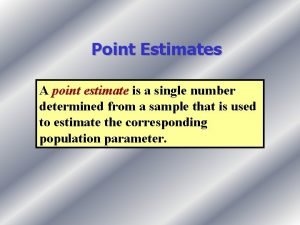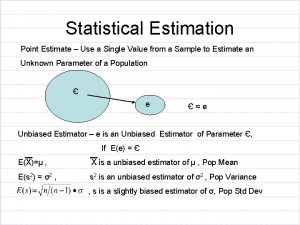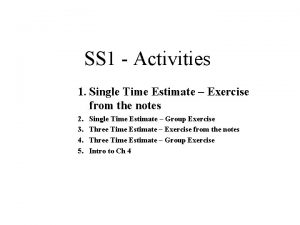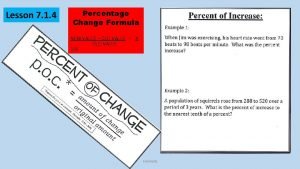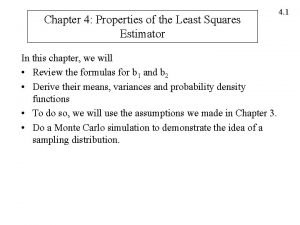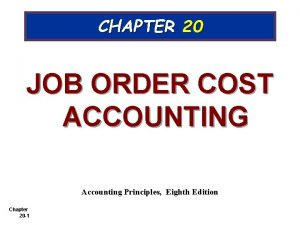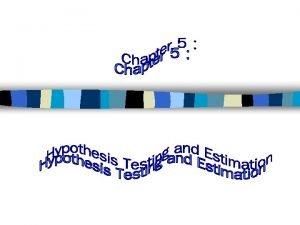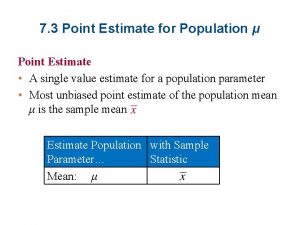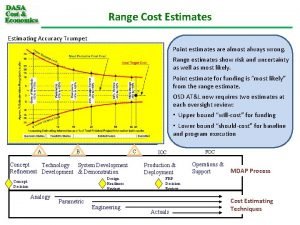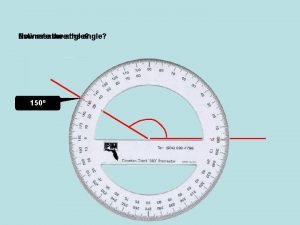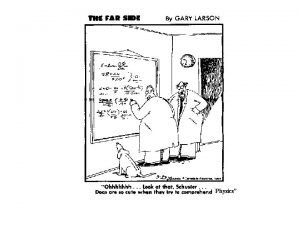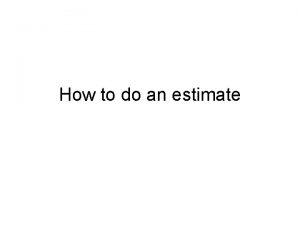Point Estimates A point estimate is a single














- Slides: 14

Point Estimates A point estimate is a single number determined from a sample that is used to estimate the corresponding population parameter.

Confidence Intervals Confidence Interval 4 Developed from a sample. 4 Provides a range of likely values for a parameter. 4 Expresses the confidence level that the true population parameter is included.

Confidence Intervals Lower Confidence Limit Upper Confidence Limit Point Estimate

95% Confidence Intervals (Figure 7 -3) 0. 95 z. 025= -1. 96 z. 025= 1. 96

Confidence Interval - General Format - Point Estimate (Critical Value)(Standard Error)

Confidence Intervals The confidence level refers to a percentage greater than 50 and less than 100. For a given size sample it is the percentage that the interval will contain the true population value.

Confidence Interval Estimates CONFIDENCE INTERVAL ESTIMATE FOR ( KNOWN) where: z = Critical value from standard normal table = Population standard deviation n = Sample size

Example of a Confidence Interval Estimate for A sample of 100 cans, from a population with = 0. 20, produced a sample mean equal to 12. 09. A 95% confidence interval would be: 12. 051 ounces 12. 129 ounces

Margin of Error The margin of error is the largest possible sampling error at the specified level of confidence.

Margin of Error MARGIN OF ERROR (ESTIMATE FOR WITH KNOWN) where: e = Margin of error z = Critical value = Standard error of the sampling distribution

Example of Impact of Sample Size on Confidence Intervals If instead of sample of 100 cans, suppose a sample of 400 cans, from a population with = 0. 20, produced a sample mean equal to 12. 09. A 95% confidence interval would be: 12. 0704 ounces 12. 051 ounces n=400 n=100 12. 1096 ounces 12. 129 ounces

Student’s t-Distribution The t-distribution is a family of distributions: 4 Bell-shaped and symmetric 4 Greater area in the tails than the normal. 4 Defined by its degrees of freedom. 4 The t-distribution approaches the normal distribution as the degrees of freedom increase.

Confidence Interval Estimates CONFIDENCE INTERVAL ( UNKNOWN) where: t = Critical value from t-distribution with n-1 degrees of freedom = Sample mean s = Sample standard deviation n = Sample size

Confidence Interval Estimates CONFIDENCE INTERVAL-LARGE SAMPLE WITH UNKNOWN where: z =Value from the standard normal distribution = Sample mean s = Sample standard deviation n = Sample size
 A point estimate consists of a single sample
A point estimate consists of a single sample Single point estimate
Single point estimate Exe
Exe Who global estimates on prevalence of hearing loss 2020
Who global estimates on prevalence of hearing loss 2020 Who global estimates on prevalence of hearing loss 2020
Who global estimates on prevalence of hearing loss 2020 Eva estimates that 475 songs
Eva estimates that 475 songs State the properties of least square estimators
State the properties of least square estimators Creative industries economic estimates
Creative industries economic estimates Building maintenance cost estimates
Building maintenance cost estimates Job order cost system
Job order cost system Fermi problem
Fermi problem Fermi aufgaben
Fermi aufgaben The account analysis method estimates cost functions
The account analysis method estimates cost functions Marquis company estimates that annual manufacturing
Marquis company estimates that annual manufacturing What is a point estimate in statistics
What is a point estimate in statistics
